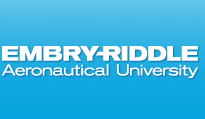Is this project an undergraduate, graduate, or faculty project?
Graduate
group
What campus are you from?
Daytona Beach
Authors' Class Standing
Arjun Nambiar, Graduate Student Chaitanya Varma, Graduate Student Christopher Sidor, Graduate Student
Lead Presenter's Name
Arjun Nambiar
Faculty Mentor Name
Dr. Chuyang Yang
Abstract
The rapid growth of the Uncrewed Aerial Systems (UAS) industry presents challenges in Research & Development (R&D) and manufacturing, such as inefficiencies, high costs, and extended development timelines. Extended Reality (XR) technologies, including augmented and virtual reality, can improve design visualization, prototype testing, and assembly accuracy, leading to faster development cycles and reduced errors. Simulation-based and virtual reality training methods can also address skill gaps, equipping personnel with the necessary competencies for advanced UAS operations. This study explores the potential of XR and advanced training techniques to address these challenges, aiming to enhance productivity and reduce costs in the UAS industry. This research utilizes a mixed-methods approach, beginning with a literature review to identify existing applications of XR in the manufacturing and aviation sectors. A structured survey will collect quantitative and qualitative data from UAS industry professionals on their experiences with XR and training methods. Statistical analysis, including correlation and regression, will be applied to assess the impact of XR on productivity and error reduction. A practical framework for integrating XR and advanced training will be developed to guide UAS manufacturers. The result is expected to provide recommendations for optimizing R&D processes and enhancing manufacturing efficiency, offering a strategic pathway for the UAS industry to improve its competitive edge.
Suggested Keywords: Uncrewed Aerial Systems, Research and Development, Extend Reality, Augmented Reality, Virtual Reality.
Did this research project receive funding support from the Office of Undergraduate Research.
No
Improving Research and Development an Manufacturing Efficiency of Uncrewed Aerial Systems (UAS) Using Extended Reality (XR) and Advanced Training Techniques
The rapid growth of the Uncrewed Aerial Systems (UAS) industry presents challenges in Research & Development (R&D) and manufacturing, such as inefficiencies, high costs, and extended development timelines. Extended Reality (XR) technologies, including augmented and virtual reality, can improve design visualization, prototype testing, and assembly accuracy, leading to faster development cycles and reduced errors. Simulation-based and virtual reality training methods can also address skill gaps, equipping personnel with the necessary competencies for advanced UAS operations. This study explores the potential of XR and advanced training techniques to address these challenges, aiming to enhance productivity and reduce costs in the UAS industry. This research utilizes a mixed-methods approach, beginning with a literature review to identify existing applications of XR in the manufacturing and aviation sectors. A structured survey will collect quantitative and qualitative data from UAS industry professionals on their experiences with XR and training methods. Statistical analysis, including correlation and regression, will be applied to assess the impact of XR on productivity and error reduction. A practical framework for integrating XR and advanced training will be developed to guide UAS manufacturers. The result is expected to provide recommendations for optimizing R&D processes and enhancing manufacturing efficiency, offering a strategic pathway for the UAS industry to improve its competitive edge.
Suggested Keywords: Uncrewed Aerial Systems, Research and Development, Extend Reality, Augmented Reality, Virtual Reality.


